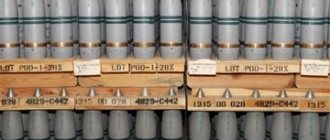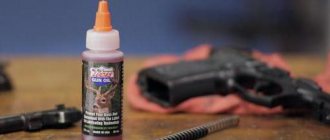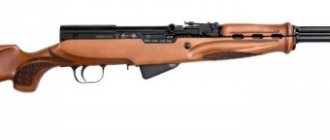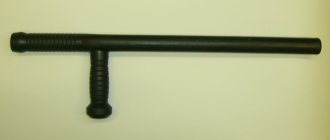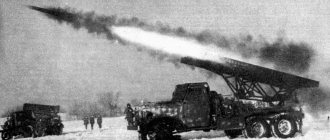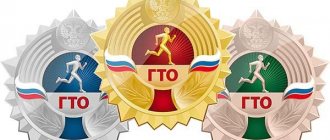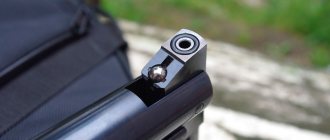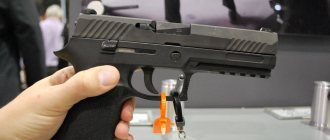Spies of several generations used a special mixture of cayenne pepper and tobacco, which, when successfully thrown into the eyes of the enemy, incapacitated him for some time without causing much harm. The suffocating properties of ordinary smoke were also used for special purposes. History knows many such examples.
The First World War brought the combat use of poison gases. Tear gases are a junior branch of the same combat gases. Moreover, in high concentrations, damage from such gases can be fatal, and in low concentrations they do not bring much benefit to the body.
Main types of light and sound ammunition[ | ]
- Hand grenades
are activated by a safety trigger mechanism and are delivered to the enemy (offender) by hand throwing.
Serial production of the G60 stun grenade
began in the UK in the late 1970s[1]; - Grenade launcher shots
:
- 37mm grenade launcher rounds. Used for shooting from 37-mm hand-held gas grenade launchers and 37-mm under-barrel grenade launchers[2]
- 40 × 46 mm grenade launcher rounds[2]
- 40-mm shot VG-40SZ - for shooting from under-barrel grenade launchers GP-25, GP-30[3]
- 50-mm GSZ-50 shot - for shooting from the RGS-50 hand grenade launcher.
- Gun cartridges
- 12 gauge rifle cartridges - produced for the police of a number of Western countries[2]
- 23×81 mm Zvezda cartridge for the KS-23 carbine
- Light and sound cartridges for civilian self-defense weapons
are designed for use in civilian traumatic self-defense weapons, and are not interchangeable with live ammunition.
- 18x45 mm SZ is a Russian cartridge developed in 2004. Used in barrelless pistols PB-4 “OSA”, PB-2 “Egida”, MR-461 “Strazhnik”, “Cordon”;
- Light-noise cartridge (KSSH) is a Russian cartridge, used with contact-remote electroshock devices (ESU “ZEUS” DK.111, ESD “FANTOM” DK.111);
- 18.5x55 mm - Russian cartridge, used in the PB-4-2 "OSA" barrelless pistol.
- Stationary light and sound devices
are installed in advance at the place where the enemy (offender) is likely to appear, are activated remotely, or are triggered automatically upon direct contact with the means of initiation.
Construction[ | ]
Flash-noise ammunition is equipped with a pyrotechnic composition. Thus, M84 uses a mixture of magnesium and ammonium nitrate.
The body of light-and-sound grenades is made either from a metal container that does not collapse at all during an explosion, with holes for the release of explosive gases, or from materials that do not form fragments with high kinetic energy during an explosion (plastic or cardboard).
Some models of light-and-sound grenades are additionally equipped with rubber buckshot to provide a traumatic effect on the offender. During an explosion, such grenades, in addition to a bright flash and loud sound, scatter rubber buckshot to the sides[4].
Contraindications
Despite the many beneficial properties, pomegranate has some contraindications. Thus, pomegranate is contraindicated for gastric ulcers and gastritis with high acidity. For these diseases, only well-ripened sweet fruits can be consumed in small quantities. Pomegranate is also contraindicated for hemorrhoids, fissures in the anus and chronic constipation. If you have low blood pressure, it is recommended to drink pomegranate juice no more than several times a week.
Video from YouTube on the topic of the article:
Damaging effect[ | ]
The main factors affecting the impact of flash-noise munitions are a bright flash of light and a loud sound, which lead to temporary blinding and deafening of persons located in the immediate vicinity of the center of the explosion, which for some time deprives them of the ability to provide effective resistance.
- The psychophysiological impact
includes the following factors:
light flash
- usually in the brightness range of 2.5 - 7.5 million candelas [2], the blinding time can reach 20-30 seconds; - the sound of an explosion
is usually in the range of 165-185 [2], the time of hearing loss can reach 4-6 hours.
includes the following factors:
- explosion impulse
- a grenade is driven by an explosion of a pyrotechnic composition, the explosive impulse of which has a sufficient damaging effect in the immediate vicinity of the tissues of the human body.
- usually in the range of 22 - 36 kPa, can cause damage to the inner ear in 1% of adults, in the case of a child the risk increases [2].
(soft tissue bruises, subcutaneous hematomas) caused by body fragments, non-lethal damaging elements and secondary fragments formed during an explosion[2].
The disorientation effect when using such devices can last from a few seconds to several minutes. The effect is most pronounced in the dark, in a confined space, when a grenade explodes in the air or between a person and a wall or other solid object. The duration of the impact on the object is determined by the type of ammunition used, the distance from the center of the explosion and other factors[2].
Under certain circumstances, flash-bang munitions can cause severe injury and death:
- so, “when a device is triggered among small objects, for example, among nuts and bolts in a repair shop, severe damage, even fatal, is quite likely”[2];
- explosion and flash can cause death in persons with heart disease[2];
- In May 2003, during a police operation in New York, a woman named Alberta Spruill died of a heart attack caused by the explosion of a flash-bang grenade thrown into her room without warning by police[5]
- There is a known case of traumatic amputation of fingers when a light-and-sound grenade was triggered in a person’s hand: on September 22, 2009, during the operation to free a hostage in Simferopol, employees of the special unit “Berkut” of the Main Directorate of the Ministry of Internal Affairs of Ukraine before the storming of a private house (where, according to the information they had, an armed criminal was hiding, holding a hostage) threw a flashbang grenade through the window. The owner of the house tried to throw the grenade into the street, causing it to explode in his hand. This led to traumatic amputation of the fingers[6][ not in the source
].
Compatibility with other stones
In this matter, everything is not easy for pomegranate. The fact is that different types of this stone belong to different elements. Pyrope, almandine, grossular are Fire stones. But, for example, uvarovite is the stone of Air. Fire and Air are friendly elements, but Fire, unlike Air, does not combine with Earth.
So, you can choose stones that suit each other according to this scheme. All grenades combine with:
- diamond and diamond;
- ruby;
- coral;
- pyrite;
- heliolite;
- rock crystal;
- topaz;
- amethyst;
- carnelian;
- golden beryl.
Garnet beads
You should not wear them with Water stones - a mutual contradiction will arise (not so strong in the case of uvarovite).
In jewelry, first of all, avoid combinations of garnet:
- with emerald;
- opal;
- aquamarine;
- moonstone;
- alexandrite;
- pearls;
- tourmaline;
- zircon.
In addition to uvarovite, it should also be used with caution. These include:
- jasper;
- chalcedony;
- agate;
- onyx;
- malachite;
- turquoise;
- obsidian;
- morion.
As well as other opaque minerals.
Application[ | ]
As a rule, light and sound grenades are used by law enforcement agencies during the detention of especially dangerous criminals, the release of hostages, the suppression of group hooliganism or riots, as well as military special forces to capture the enemy alive.
During counter-terrorism operations, flash-noise ammunition is used by internal troops in conjunction with military weapons. They can be used as an aid to create favorable conditions for the use of conventional weapons.
The practice of using light and sound grenades shows their high effectiveness in displacing the enemy from occupied territory and engineering structures.
Light and sound ammunition developed in the USSR[ | ]
- Multi-element light and sound hand grenade "Torch"
. Effective range, m - 20 - Number of ejected elements, pcs - 6
- Luminous intensity of each element, cd - 10 million
- Sound pressure at a distance of 10 m, dB - not less than 145
" The grenade is fireproof and does not produce fragments when triggered. Can be used in rooms of limited volume, as well as in airplanes, trains, and cars.
- Effective range, m - 5
SPS systems produced by the Federal Research and Production Center "Research Institute of Applied Chemistry"
- Fragment-free flash-and-sound grenade "Zarya-2"
Height with PPM, mm - 130 - Diameter, mm - 70
- Weight, kg - 0.175
- Sound pressure at a distance of 10 m, dB - up to 180
- Luminous intensity, cd - up to 30 million.
- Deceleration time, s — 4+1
- Weight, kg - 0.56
. Designed for psychological impact on the enemy (criminal) by releasing 4 light and sound elements, which provides temporary suppression of psychological stability by acoustic and light and sound effects and reduces his combat ability.
Specifications:
- Product weight, kg - 0.4
- Number of ejected elements, pcs - 4
- Mass of the composition in one element, g - 15
- Maximum luminous intensity of one pulse, cd - 2x10 million
- Sound pressure level of one pulse (10 m), dB - 150±15
— is triggered by electric current supplied to its contacts.
- Length, mm - 84
. Equipped with an electric (for the "Plamya-M" grenade) or safety-launching (for the "Plamya-M2" grenade) mechanism.
- Weight, kg - up to 0.2
Safety-actuating mechanisms[ | ]
- Safety trigger mechanism
(PPM) Designed to initiate the main charge of non-lethal hand grenades: U-515 - equipped with a B-37 detonator cap; - U-517M - equipped with an igniter primer.
- Remote action time, s - 3.2-4.8
Grenade models
The SPETSTIR online store is pleased to offer you a wide range of grenade models. In the catalog you can select and buy a grenade intended for training events. During the deactivation of the grenade, the detonator and explosive were removed from its structure, and all parts were made in such a way that installation of the warhead inside the grenade itself was excluded, but despite this, the model exactly imitates the operation of the original mechanisms and is completely disassembled.
How to choose and buy a grenade inexpensively?
In the catalog of our online store you can choose and buy a model of the F-1 training grenade. The F-1 grenade is a prototype of a hand-held, remote-action defensive grenade designed to defeat opponents in defensive battles. The combat original of the F-1 grenade, which was more often called the “limon”, had a fairly large radius of scattering fragments and was designed to be thrown from armored vehicles or shelter.
The F-1 grenade was used by Soviet troops during the Great Patriotic War and was put into service in 1940. The distinctive features of the F-1 combat grenade were the explosion speed - 3 - 4 seconds and the wide scattering of fragments in a radius exceeding the throwing range, on average - 60 meters.
Similar to the combat model, the F-1 grenade model has a solid body with fins, a pin ring and a threaded insert; the weight is 600 g, just like the original. The model is absolutely safe, since it does not contain a UZRG salvo simulator and explosives.
Where to buy a grenade model?
You can buy the F-1 training grenade inexpensively in the SPETSTIR online store. MMG F-1 is a great opportunity to add to your collection of Soviet-era weapons, an original souvenir and an unforgettable gift. In addition, such models are widely used for learning throwing skills, as well as in military performances and historical reconstructions.
Even a child can own a valuable and beautiful model of a weapon, because MMGs are legally recognized as safe household products and no permits or licenses are required for their storage. Thanks to the certificate, we can guarantee you no problems or delays during shipment.
If you have questions about the products presented in the catalog, please call the phone number listed on the website. Our managers are always ready to provide advice and help you choose a product based on your wishes and needs. We work with both retail and wholesale clients.
You can get acquainted with the products in our store, which is located at the address: Moscow region, Yegoryevsk, st. Sovetskaya, 35.
Notes[ | ]
- SAS Weapons - Stun Grenade
- ↑ 12345678910
Leroy Thompson. Anti-terror. Hostage Rescue Guide. M.: FAIR PRESS, 2005. pp. 140-141 - VG-40SZ, 40-mm flash-and-sound grenade Archived copy of November 3, 2013 on the Wayback Machine // Russian Arms news agency
- Traumatic grenades. // website "Travmatik"
- Shaila K. Dewan. City to pay $1.6 million in fatal, mistaken raid // “The New York Times” dated October 29, 2003
- The Crimean police stated that they did not attack the Tatars and apologized to the victim // “Correspondent” dated February 23, 2009
- SWAT Officer killed by non-lethal flashbang grenade Archived copy dated April 4, 2013 on the Wayback Machine // “The Agitator” dated March 9, 2011
- Aigul Kamaeva. In Bashkiria, a senior police lieutenant was blown up by a grenade during an exercise // Rossiyskaya Gazeta, May 24, 2011
Links[ | ]
- Light and sound devices used by law enforcement agencies of the Russian Federation // news agency "Arms of Russia"
- Decree of the Government of the Russian Federation No. 634 of June 24, 1998
- Decree of the Government of the Russian Federation No. 362 of April 23, 1993 “On approval of the list of special means, types of firearms and ammunition in service with tax investigation bodies of the Russian Federation”
- Sergey Monetchikov. Weapons workshop: special non-lethal means // “Brother” magazine, April 2013
A shooting device called a “fountain pen”
Even a special firing device has been developed, called the “Fountain Pen,” from which various 15-mm non-lethal ammunition is fired, including flash-noise cartridges. (In addition, a shock-action cartridge, a signal cartridge, and a paint cartridge are fired.)
In addition to the listed flash-noise grenades, the “Torch” and “Torch-salon” devices are also used. These devices fire several small flash-bang grenades in different directions. There are special combined action grenades that, in addition to the light and sound effect, fire special rubber shock elements.
